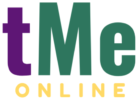9708/42/M/J/24
In 2022, many countries experienced a high rate of inflation caused by disruptions to the supply of goods and services arising from the Covid-19 pandemic and the conflict between Russia and Ukraine. In one country, the government cut taxes and the central bank raised interest rates.
Evaluate the likely impact of these policies on that government’s ability to control inflation. [20]
These situations led to supply-side inflation, often described as cost-push inflation, where disruptions caused increases in the prices of goods and services. Cost-push inflation arises when the costs of production increase, leading to a decrease in aggregate supply (AS). When AS shifts leftward, prices increase, resulting in inflation.
The government’s tax cuts would likely increase disposable income for consumers, potentially boosting consumer spending. This increase in consumer demand can shift the aggregate demand (AD) curve to the right, potentially exacerbating inflation if the aggregate supply remains constrained. For instance, lower taxes might lead to increased household spending on goods and services, which could put upward pressure on prices if supply shortages continue to persist. [Draw a classical AD-AS model, illustrating how a tax cut shifts the Aggregate Demand (AD) curve to the right,leads to a higher price level (inflation) without a corresponding increase in output.]
On the other hand, the central bank’s decision to raise interest rates is a contractionary monetary policy aimed at reducing demand-pull inflation by making borrowing more expensive and encouraging saving. Higher interest rates tend to decrease consumer spending and investment, shifting the AD curve leftward. As borrowing costs increase, consumers may reduce spending on big-ticket items like houses and cars, while businesses might delay investments in new projects due to the higher cost of capital. This decline in demand can help to counteract inflationary pressures by reducing aggregate demand.
However, the issues lies in the fact that the inflation experienced in 2022 was primarily supply-driven, meaning that controlling inflation through demand-side measures might be less effective. Higher interest rates might help curb consumer spending to some extent, but the ongoing supply shortages may continue to drive up prices regardless of lower demand.
Additionally, the simultaneous implementation of tax cuts and higher interest rates may send mixed signals to consumers and businesses. Tax cuts can stimulate demand, counteracting the dampening effect of higher interest rates. As a result, the net effect on aggregate demand might be smaller than anticipated, leading to a less significant reduction in inflation. This illustrates the difficulty in determining the appropriate level of spending reduction or increase in interest rates needed to achieve the desired reduction in inflation.
Another key factor to consider is the time lag associated with monetary policy. The impact of higher interest rates on reducing demand is not immediate; it may take several months or even longer for the effects to materialize. During this period, inflationary pressures may persist if supply constraints are not resolved. Moreover, expectations play a crucial role—if businesses and consumers expect prices to keep rising, they may continue to spend and invest despite higher borrowing costs, making inflation more persistent.
The longer-term implications of these policies also deserve consideration. Higher interest rates may help stabilize inflation in the medium term but can lead to slower economic growth and higher unemployment. This trade-off represents an opportunity cost for the government, as achieving lower inflation might come at the expense of economic growth. Conversely, while tax cuts might support economic growth and mitigate unemployment, they risk sustaining inflation in a supply-constrained environment.
In conclusion, the government’s use of tax cuts and higher interest rates presents a mixed approach to controlling inflation. The effectiveness of these measures depends on the balance between stimulating growth and containing inflation, as well as the time lags and the expectations of economic agents. A more targeted approach addressing supply-side issues directly, such as improving supply chains or reducing production costs, might be more effective in managing inflation under these conditions.
